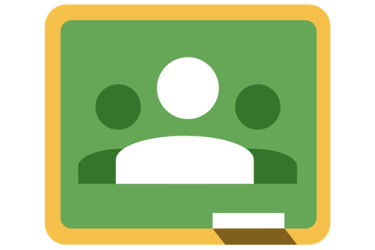Students are ingenious. (Give a high five if you’re a student reading this!)
When assigned to write an essay or any other kind of academic paper, they know how to do research, use data, and create a plan. They think of hooks, introduction, and conclusion. They know that an essay should be argumentative and original. And that’s where problems start.
While writing, several blocks might prevent students – and anyone working with texts – from crafting a great story:
- They don’t have enough writing skills to expand ideas.
- They don’t understand the topic or are tired of writing on the same theme over and over again, lacking original arguments or new data for each work.
- Or, let’s face it, some of them are lazy procrastinators unwilling to spend time on college writing.
Whatever is the block, its consequence is evident: Plagiarism.
To hoodwink professors and cheat plagiarism check software, students believe it’s okay and enough to
change word order or sentence structure of a source and, therefore, make it look and sound original. They know the working algorithm of most plagiarism checkers: to discover exact matches in a particular word number, which is 5-9 words at average.
In other words, if a student changes every fifth lexical item in a text, online plagiarism checkers won’t see it as duplications.
But: Are all plagiarism checkers so predictable? Is it so easy to trick them?
What Students Do to Trick Plagiarism Checkers
The most common tricks used to cheat software and hide plagiarism in academic writings are:
To avoid word-for-word plagiarism in writing, students do their best to bypass a so-called “five (consecutive) word” rule saying one is considered a plagiarist if they use five consecutive words identical to others’ writings. Hence, it seems obvious to change a word order in original sentences so a plagiarism detector couldn’t find any duplications.
This trick doesn’t work with tools like PlagiarismCheck.org.
Its improved algorithms function in a different way, looking for duplications in semantics rather than word order. (Although the tool recognizes exact matches, too.) So, if a student decides to rearrange words in a source to hide duplications, PlagiarismCheck.org will detect them.
Some students practice such small edits to hide plagiarism
unintentionally: they forget quotations, references, or don’t know how to
cite in the right way. As a result, accidental plagiarism appears, leading to unpleasant consequences for those accused of it.
Intentional manipulations with original texts are much trickier. To make the text sound original, dishonest students change sentence structures and grammar constructions, without respect to the fact such tricks might break word order rules and influence readability as well as overall meaning of their message.
Changes in Sentence Structure
This scheme is easy to pull. Yes, it takes time; but some students still prefer spending theirs to cheat plagiarism checkers rather than working on own original texts.
How do they manipulate with sentence structures to hide copy-paste?
- Changing the order of compound and complex sentence parts, including conjunctions.
- Changing all words in a sentence, if appropriate.
- Changing the order of similar parts of a sentence.
However, PlagiarismCheck.org recognizes manipulations with sentence structure as plagiarism and flags such senteces as duplication.
Active to Passive Voice Changes
Despite the fact that passive voice, -ly adverbs, and some grammar constructions such as there is/there are make writings less convincing, students use them actively (oops, a -ly adverb detected!) now and then.
Why?
- They compensate for the lack of vocabulary.
- They can help to increase the number of words in a text: when a professor assigns a 1,500-word essay, a passive voice, redundant adverbs a la “very,” “really,” “maybe,” “quickly” as well as there is/there are constructions come to the rescue.
- And again, they allow rewriting an original text so that plagiarism checkers couldn’t recognize any duplications there.
Students don’t worry about the readability of their writing. Changing active to passive voice in sentences, they hope to hide the original nature of used arguments. Wordiness helps to rarefy lexical items of a source so that
plagiarism check tools couldn’t discover copy-paste and rewrite.
However, PlagiarismCheck.org and other modern tools still find plagiarism in the content with active to passive voice changes in sentences. Even if all the given manipulations – word rearrangement, changes in sentence structure, and active to passive voice change are applied, the tools still uncover all the cheating attempts and flag the text extracts as copied.
Most students still believe (or want to) in plagiarism myths, so they don’t take it as an offense to copy-paste or rewrite texts found online. They hope to cheat the system and get A’s for duplicating others’ works but, even if it happens accidentally, such attempts
lead to expulsion.
What is the solution?
- Research.
- Take your time to write and edit a text.
- Use reliable tools such as PlagiarismCheck.org to avoid duplications in texts.
With improved algorithms of modern software, it’s not a problem for educators to check student papers and discover plagiarism issues there. It seems we are one step closer to defeating plagiarism in academia once and for all.
Plagiarism grading by human
Reliability of human grading is mostly higher, but the subjective factor must be taken into account, so the work should be cross-evaluated by several people. The establishment of inter-rater reliability – the degree of agreement or consistency between two or more raters who are independently rating the same paper – is recommended. There are different statistical measures that can be used to assess inter-rater reliability, such as Cohen’s kappa, Fleiss’ kappa, and intraclass correlation coefficient (ICC). Grading consistency by humans takes longer and requires significantly more resources.
Plagiarism grading by plagiarism check tool
Reliability of plagiarism checkers is lower, due to the false-positive results possibility. However, plagiarism detection consistency is achieved faster and more accurately due to the always objective technological methods.
The tool does not form the final verdict, so the final decision is always up to the person. All plagiarism checkers give a percentage of text similarity, an exact match of three words in a row – compared to millions of works the software will find in its databases or on the Internet.
PlagiarismChecker.org, for example, will analyze and highlight both completely identical parts and paraphrased pieces of text, flagging potential cheating. Also, the tool is able to determine specific signs of AI use and authorship authenticity analyzing the similarity of text to other works of the same student and individual style.
Accordingly, the total percentage of similarity will be formed. If it is higher than 25%, the work may be marked as plagiarism. The upper limit of similarity varies depending on the particular institution. In general, academic integrity policies usually allow 0-5% similarity. Such precision and completeness of analysis are not available by human grading.
The Impact of Plagiarism Checkers on Grading Practices
Today, ensuring academic integrity and plagiarism prevention is of utmost importance. Only after determining the level of probable plagiarism, teachers begin to evaluate the work according to all other criteria. Originality checks changed the evaluation process in general.
Top impacts:
- Increased focus on critical thinking skills;
- Development of academic writing skills;
- Improvement of writing proficiency;
- Plagiarism detection precedes other criteria.






